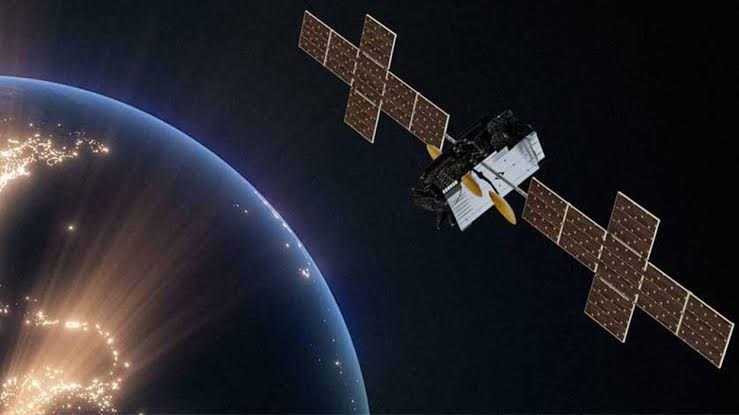Tech billionaire Elon Musk’s space exploration company Space X launches private communication satellite ‘Jupiter-3’. According to Space.com ‘a Falcon, a heavy rocket will launch Maxar technology’s largest ever satellite named Jupiter-3. Almost eight minutes after launch, the rocket side’s booster will return to Earth and land on Landing Zones 1 and 2. The rocket and the satellite are in good condition.
Jupiter-3, a private communication satellite is as big as the wingspan of a large airplane and will connect to other satellites in space from the Hughes Jupiter fleet. The objective of the establishment is to provide services like in-flight WiFi and improve private WiFi with other technologies.
In a tweet, Elon Musk’s SpaceX said, “Falcon Heavy is vertical at Launch Complex 39A ahead of tonight’s launch. The 99-minute window opens at 11.04 pm ET, and the weather is 85% favorable for liftoff.”
Falcon Heavy is vertical at Launch Complex 39A ahead of tonight’s launch. The 99-minute window opens at 11:04 p.m. ET, and weather is 85% favorable for liftoff → https://t.co/bJFjLCiTbK pic.twitter.com/la5BRoxPOu
— SpaceX (@SpaceX) July 26, 2023
About SpaceX Falcon Heavy
The Falcon Heavy Spacecraft is ready to carry Jupiter-3 into orbit. It will liftoff from launch complex 39A, at NASA’s Kennedy Space Centre in Florida.
Falcon Heavy is SpaceX’s seventh launch for the triple booster rocket.
The Jupiter-3 will collaborate with others in the Hughes Jupiter satellite fleet already in orbit.
The size of Jupiter 3 will be comparable to an airline’s wingspan, ranging between 130 and 160 feet.
The satellite will support many services such as in-flight WiFi and augment private WiFi usage with other wireless technologies.
Recently, Space X and Indonesia introduced a satellite from the United States. The basic objective of the satellite is to bring high-speed internet to remote areas across the island country. Recently, the European-built Satria-1 took off from a Florida launch station, deployed by a SpaceX Falcon 9 rocket.
Joko Widodo, Indonesian president called it the country’s “first government-owned multi-function satellite with the biggest capacity in Asia”.
The satellite is specifically designed to double the limit of Maxar’s satellite fleet with 500 extra Gbps. It aims to empower to serve a maximum number of clients and especially to places where fiber and cable availability is unreliable or inaccessible.
The satellite will enhance the services such as maritime associations, enterprise networks, and backhaul for mobile network operators (MNOs), and provide WiFi solutions in South and North America.
According to Maxar, “the satellite boasts of advanced technological architecture, resulting in miniaturization of its electronics. It also incorporates solid-state amplifiers and upgraded efficiency for its antennas, as indicated by an explanation on Maxar’s site”.
The thermal vacuum testing was made before the launch of the satellite which affirmed that the satellite can handle the extensive variety of temperature fluctuations it experienced in Space.
In addition, the device is scheduled to come in 2024 and will am excellent services with a speed of 150 gigabytes per second, three times the current speed of satellite internet in the archipelago.
Two Saudi Arabian astronauts from which one is the nation’s first woman in space to an international space station Space X.
As part of a personal mission arranged by Axiom Space, a SpaceX capsule docked with the ISS. However, the SpaceX Falcon 9 rocket leaving the Kennedy Space Centre was carrying the Axiom Mission 2 (AX-2) crew.
Read more:
NASA could rely on the Falcon Heavy rocket of Space X to send people to the Moon
Space X’s Falcon Heavy finally fires up for the first time





 TikTokers Can Now Label The Deep Fake Content On The Platform
TikTokers Can Now Label The Deep Fake Content On The Platform